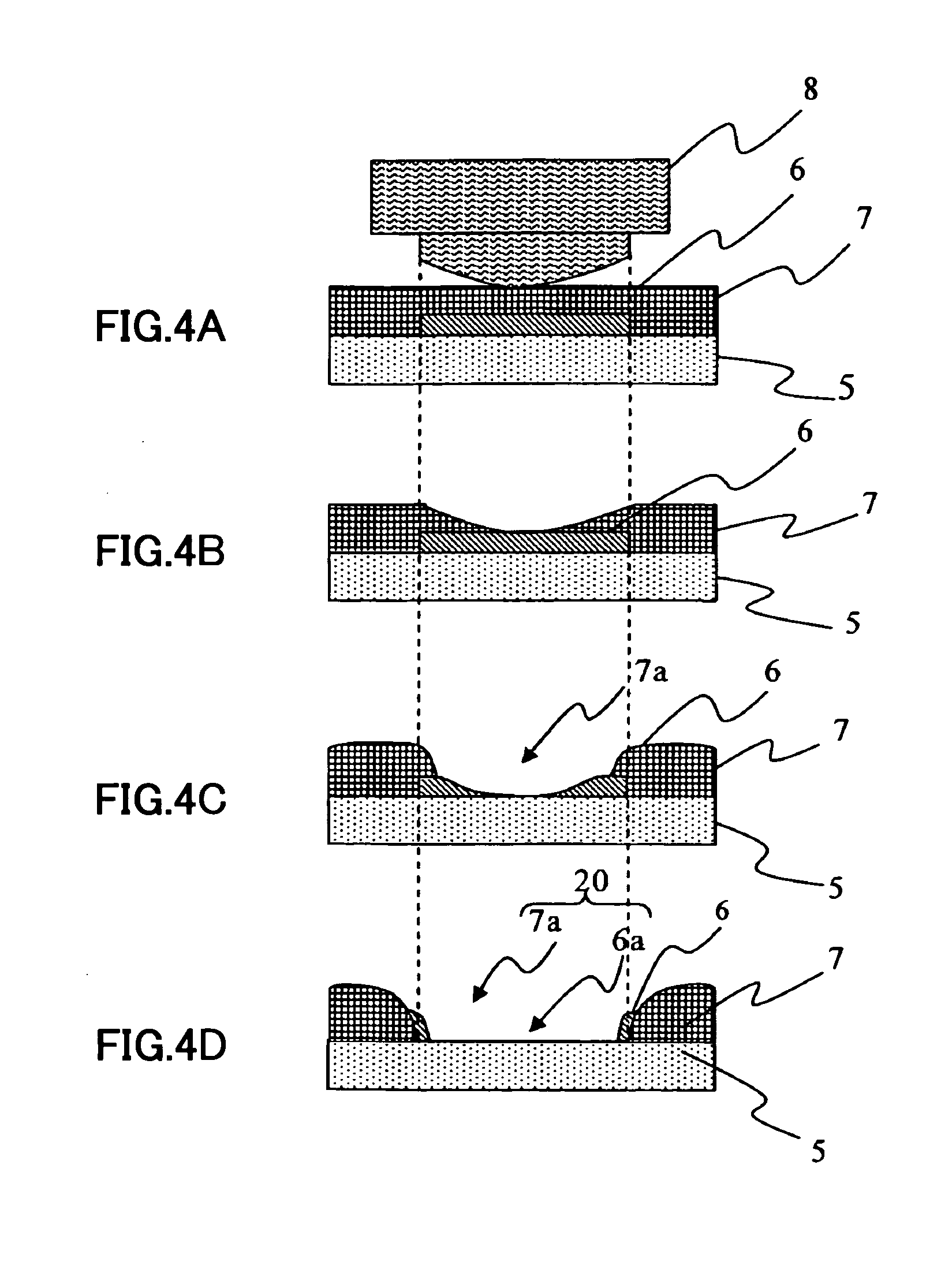Adhesive label and method of producing the same
a technology of adhesive labels and adhesive adhesives, applied in the direction of identification means, paper/cardboard containers, instruments, etc., can solve the problems of affecting the operation efficiency, hindering the transportation of adhesive labels, and not disposed of non-adhesive layers, etc., to achieve satisfactory energy efficiency, reduce production costs, and show adhesiveness
- Summary
- Abstract
- Description
- Claims
- Application Information
AI Technical Summary
Benefits of technology
Problems solved by technology
Method used
Image
Examples
embodiment 1
[0035]FIG. 1 is a schematic structural view of an adhesive label according to Embodiment 1 of the present invention.
[0036]An adhesive label 1 has the following configuration. That is, an adhesive agent layer 5 made of a pressure-sensitive adhesive agent, a non-adhesive layer 6, and a non-adhesive heat-reactive layer (resin film layer) 7 made of an olefin-based resin are laminated in the stated order on one surface of a sheet-shaped support 2 made of paper or the like, and a thermosensitive recording layer 3 on which characters, bar codes, and the like are to be recorded is laminated on the other surface of the support 2. An image-receiving layer or the like on which recording is conducted with ink from an ink jet recording device may be used in place of the thermosensitive recording layer 3, and any layer on which recording is conducted may be used.
[0037]The non-adhesive layer 6 is not provided uniformly over the entire adhesive label 1, but is disposed on the adhesive agent layer 5...
embodiment 2
[0054]An adhesive label 1 according to Embodiment 2 of the present invention is described. Regarding the components similar to those of Embodiment 1 described above, the descriptions thereof are omitted.
[0055]FIG. 7 is a schematic structural view of an adhesive label 1′ according to Embodiment 2 of the present invention. The adhesive label 1′ has the following configuration. That is, an adhesive agent layer 5 made of a pressure-sensitive adhesive agent, a non-adhesive layer 6, a non-adhesive heat-reactive layer (resin film layer) 7 made of an olefin-based resin, and a slide layer 21 made of the same material as that of the non-adhesive layer 6 or a material with a low friction coefficient are laminated in the stated order on one surface of a sheet-shaped support 2 made of paper or the like, and a thermosensitive recording layer 3 on which characters, bar codes, and the like are to be recorded is laminated on the other surface of the support 2. A method of producing an adhesive label...
PUM
| Property | Measurement | Unit |
|---|---|---|
| area | aaaaa | aaaaa |
| thickness | aaaaa | aaaaa |
| thickness | aaaaa | aaaaa |
Abstract
Description
Claims
Application Information
 Login to View More
Login to View More - R&D
- Intellectual Property
- Life Sciences
- Materials
- Tech Scout
- Unparalleled Data Quality
- Higher Quality Content
- 60% Fewer Hallucinations
Browse by: Latest US Patents, China's latest patents, Technical Efficacy Thesaurus, Application Domain, Technology Topic, Popular Technical Reports.
© 2025 PatSnap. All rights reserved.Legal|Privacy policy|Modern Slavery Act Transparency Statement|Sitemap|About US| Contact US: help@patsnap.com



